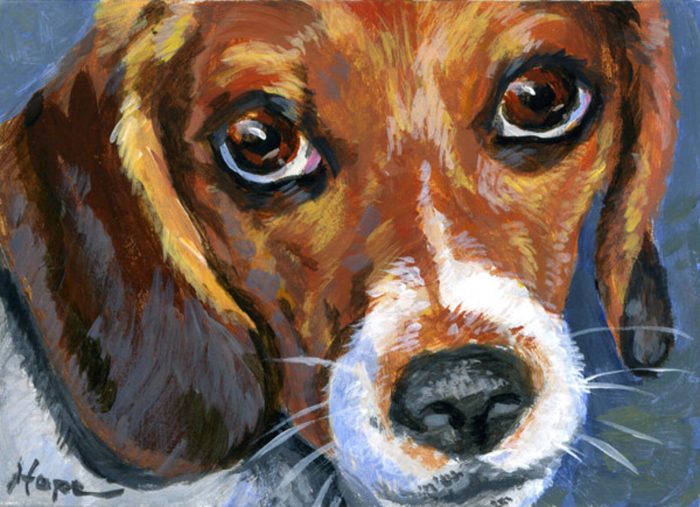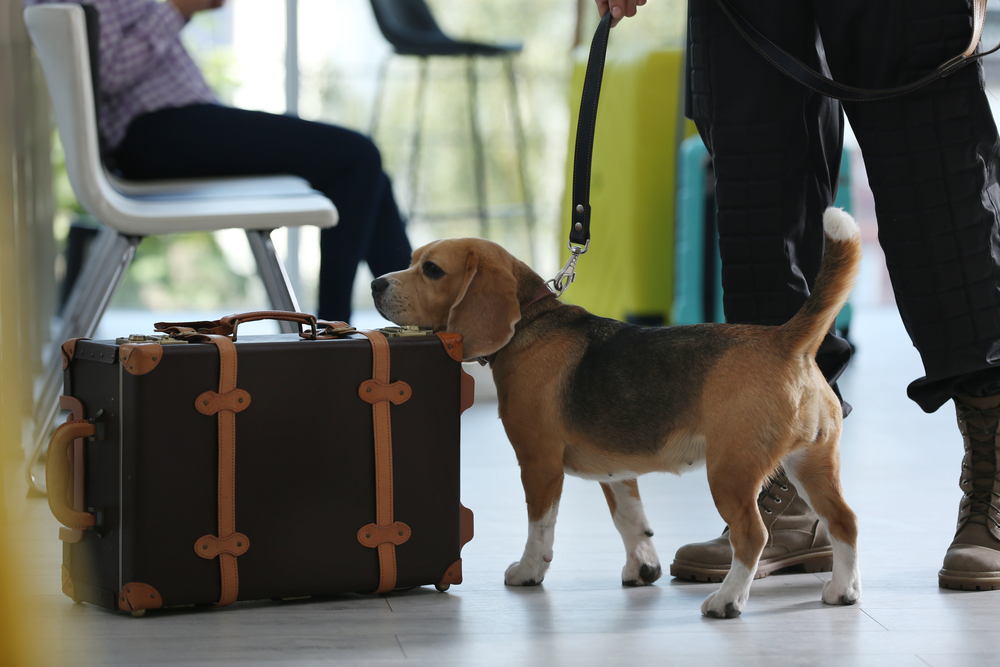
This story starts out with Ramesh Pokhriyal, an Indian politician appointed to serve as Minister of Human Resource Development in 2019. His title later changed to Minister of Education, but that’s not important to the story.
In 2021, Pokhriyal launched NanoSniffer, the world’s first “Microsensor based Explosive Trace Detector,” or in layman’s terms, a device designed to detect explosives in less than 10 seconds by providing trace detection of nano-gram quantities of explosives and delivering accurate results.
The “100% made in India” invention was developed by NanoSniff Technologies, a start-up developed by the Indian Institute of Technology in Mumbai.
But it was all made possible by a Beagle and his observant scientist-owner.
As the story goes, V. Ramgopal Rao, a professor and researcher at IIT Bombay, was sipping his tea one morning as he watched his daughter playing hide-and-seek with the family Beagle, “Shiloh.” After Shiloh found the little girl each and every time she hid, her mother calmed the frustrated child by telling her that Beagles are renowned for their sense of smell.
Rao was reminded of something we all already know: Beagles have a remarkable sense of smell. Can’t you just envision a cartoon light bulb going off over Rao’s head when he determined how to make an electronic nose? Rao’s observation ultimately lead to the development of an electronic nose, and his “e-nose” that was able to detect explosives led to the founding of the aforementioned startup, NanoSniff Technologies.
It’s flagship product, NanoSniff, was (and is) able to detect the presence of explosives at low concentrations, even in quantities as small as a few molecules, in seconds. NanoSniff significantly reduced dependency on imported explosive trace detectors able to find dangerous explosives like Nitroglycerine, Ammonium Nitrate and RDX, and it could do it at a one-third of the price of imported ETDs. It was also able to classify the explosives into different classes of military, conventional and homemade explosives.
We switch into present tense to to explain that once the NanoSniffer detects something of interest, it alerts security personnel with a sunlight-readable color display attached to the device via visible and audible alerts. This is a game changer at high-security installations like airports, subway and railway stations, hotels, malls or any place people can be found in large numbers.

Beagle image by NewAfric Depositphotos
If you’re still with us and want to “nerd out” on the technicalities. it goes like this:
The user – say, a security guard – swipes the surface of a car or bag, as well as the people with them. If there are any explosives particles, they will be collected on a ‘swipe’. The swipe, or sample, is inserted into the device which transfers the particles onto a microheater sensor via evaporation from the swipe. Using the principle of differential calorimetry (which we all know, right?) the microheater detects whether the sample collected is an explosive or not. If it’s an explosive, it exhibits differently than a non-explosive. The rest is a bit more complicated and has to do with thermal signatures, rapid deflagration, the signature of an explosive, and pattern recognition techniques.
And at the end of the day, the device simply demonstrates how the unique abilities of the Beagle led to a significant advancement in detection technology. Put another way, if you’re in India shopping and don’t blow up, thank a Beagle.
You can read more about this technology here.
Image: Beagle by “Custom Pet Portrait by Hope Lane”
https://www.etsy.com/shop/HopeLaneArt
www.facebook.com/hopelaneportraits
www.hopelaneart.com
